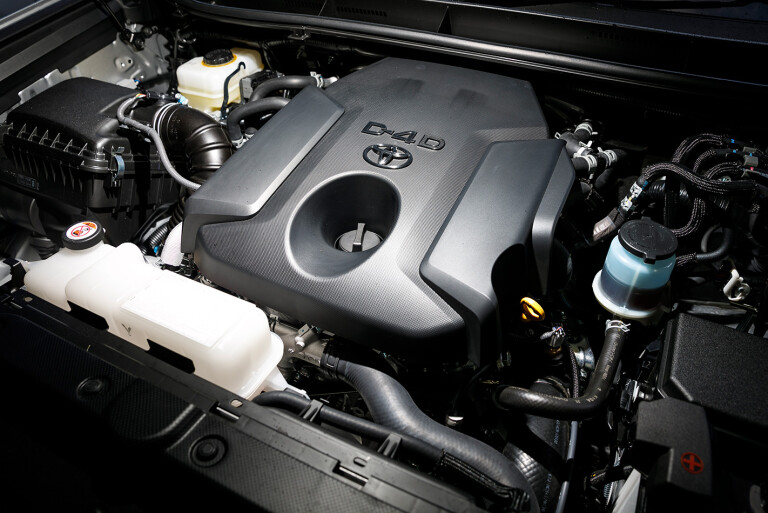
Toyota Australia has lost its appeal against a 2022 Federal Court decision over damages owed to owners of Hilux, Fortuner and Prados fitted with problematic diesel particulate filters.
In hearing the the Japanese carmaker's appeal, the Federal Court chose to uphold its earlier decision which found that more than 260,000 Australian Toyotas were equipped with DPF systems that were not of "acceptable quality".

Total damages owed have yet to be revealed, however Toyota could be liable for an estimated $1 billion over the 264,170 affected Hilux, Fortuner and Landcruiser Prado diesel models manufactured between 2015 and 2020.
This latest figure is down on the plaintiffs' lawyers who had previously targeted more than $2 billion, with members of the class action entitled to more compensation depending on the extent to which they were affected by the loss of their vehicle.
The Court upheld that Toyota was in breach of Australian Consumer Law, having engaged in misleading or deceptive conduct in the marketing and sale of the vehicles, and that the value of affected vehicles at the time of their initial supply has been reduced as a result.
It was found that the reduction in value of these affected vehicles was 10 percent, and not 17.5 percent as had been found by the primary judge.

The Court acknowledged that Toyota developed an effective fix for the defect in May 2020 and subsequently offered it free to owners, and also extended the warranty on the item to ten years/unlimited-km.
It was also found that there was merit in Toyota's submission that the utility of its vehicles was unaffected by the defect and its consequences, and the Court has set aside the primary judge's aggregate damages award from last April – with the matter of forthcoming damages being sent back to this judge for reassessment.
Responding to the decisions, Toyota released the following statement.
"Toyota is reviewing the decision of the Full Court of the Federal Court of Australia.
"We remain committed to assisting any customer whose vehicle has experienced the DPF issue and to providing a free-of-charge remedy that has been available since 2020. We believe we have implemented customer-focused and technically grounded measures to resolve customer concerns.
"Toyota will consider the judgment carefully before making any further comment."
CATCH UP
- DPFs are designed to capture and burn off pollutants and harmful emissions. Many of these vehicles were not regularly running at conditions where DPFs are effective, and became clogged.
- Defective DPFs could cause a number of issues including excessive white smoke, reduction in power output and foul exhaust odours.
- In 2018, Toyota fitted a DPF burnoff button to its 2.8-litre diesel, which the Court described as a less affected 'field fix', then later upgraded the engine substantially in mid-2020.
The story to here
April 2022: Federal Court finds Toyota misled customers on DPF defect
Snapshot
- More than 250,000 Toyota diesel vehicles found to have DPF defect
- Court finds values affected by 17.5 per cent on average
- Owners may be entitled to compensation
Toyota Australia may be forced to pay billions of dollars to customers affected by a mass defect on selected diesel models.
The Federal Court has found an ongoing and widespread problem with diesel particulate filters (DPF) fitted to some Toyota diesel vehicles reduced their value, opening the door for compensation to be paid to hundreds of thousands of owners.
The Honourable Justice Lee said Toyota Australia’s “conduct in marketing the vehicles as being of acceptable quality was misleading”.
In total, 264,170 vehicles built between October 1, 2015, and April 23, 2020 were affected by the issue, across HiLux, Fortuner, and LandCruiser Prado model ranges.
The defect is relevant specifically to cars fitted with either a 2.4-litre ‘2GD-FTV’ or 2.8-litre ‘1GD-FTV’ turbo-diesel four-cylinder engine.

The DPF assembly – designed to reduce harmful exhaust emissions – was found to become clogged or blocked, stopping the system from working, and instead creating a “range of consequences including emission of foul-smelling white smoke, the display of excessive DPF notifications, and the need to have the vehicle inspected, serviced and repaired”.
Fuel consumption was also found to have increased when the issue arose.
Toyota’s defence team argued the issues didn’t affect the operation of the vehicles, and drivers were still able to drive from A to B safely, as the DPF system was not essential.
However, the Honourable Justice Lee wholly rejected the arguments, writing “[Toyota’s] attempt to downplay the significance of the core defect and the defect consequences does not withstand scrutiny”.
Despite owners arguing the defects reduced car values by 25 per cent, Justice Lee deemed a 17.5 per cent reduction in the average retail value to be appropriate.

“We are in the process of reviewing the court's judgement,” a spokesperson for Toyota Australia told WhichCar.
“At every step, we believe that we have implemented customer focused and technically grounded remedies to resolve customers’ concerns,” they said in a statement.
“Toyota will carefully consider the initial trial judgement before making any further comment.”
The court’s final orders will be handed down in the coming weeks.
COMMENTS